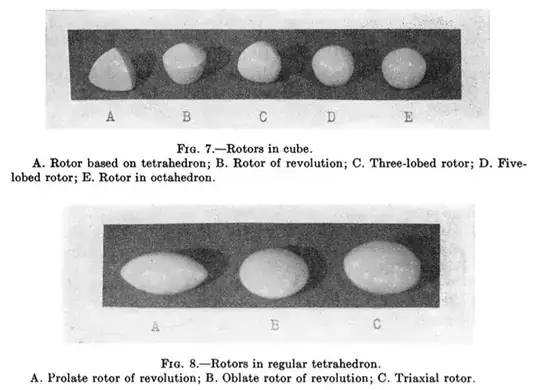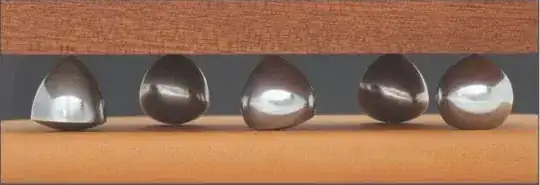In two-dimensional case one can generalize figures of constant width as figures which can rotate in a convex polygon. Here is one example which can be used to drill triangular holes:

I would like to know what happens with this generalization in dimension $3$ and maybe higher. Obviously a body of constant width $1$ can rotate arbitrary in a unit cube. More formally, given a body $B$ of constant width $1$ and $A\in SO(3)$ there is $v\in \mathbb R^3$ such that $$A(B)+v\subset\square,$$ where $\square$ is unit cube. On the other hand, except for the cube, I do not see any other examples of convex polyhedron which have nontrivial rotating bodies (i.e. distinct from the inscribed ball).
I hope that the answer is known. (= I hope I should wait for the answer and I do not have to think.)
The question is inspired by this one: "Local minimum from directional derivatives in the space of convex bodies."

